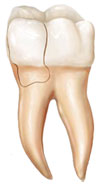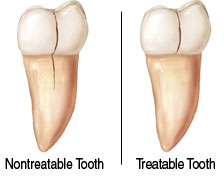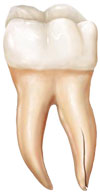Cracked Tooth Treatment in Irvine & Riverside
Cracked teeth can have different types of symptoms such as temperature sensitivity, pain when chewing, or upon releasing of the biting pressure. It is difficult to diagnose the cause of discomfort in some cases, since it’s very common for this pain to come and go.
Types of Cracks:
However, this procedure can sometimes fail, which in that case the endodontist recommend Apicoectomy (microsurgery).Craze Lines
These are more common in adults. These are more of superficial and shallow cracks that only affect the outer layer of the tooth (enamel), and are usually of no concern.
Fractured Cusp Usually when a cusp is weakened, it may fracture and break off. This rarely damages the pulp. Your dentist can restore the tooth to full function by placing a crown on it.

In this case, the crack extends from the chewing surface toward the root in a vertical direction, and may extend below the gum line into the root damaging the pulp. Root canal therapy along with a proper restoration of the tooth is necessary. An untreated cracked tooth can become worse making it non-treatable, causing tooth loss.

This is usually the result of an untreated cracked tooth. It is diagnosed by a crack with distinct segments. The treatment for this type of crack is usually extraction, and placement of a bridge or dental implant.

This type of fracture begins at the root and extends toward the chewing surface. It is seen more often on teeth that have had previous root canal therapy. Since there are usually minimal symptoms with this type of crack, it can go unnoticed. If portion of the root can be saved, the treatment involves endodontic surgery. Otherwise, fractured tooth will have to be extracted.

